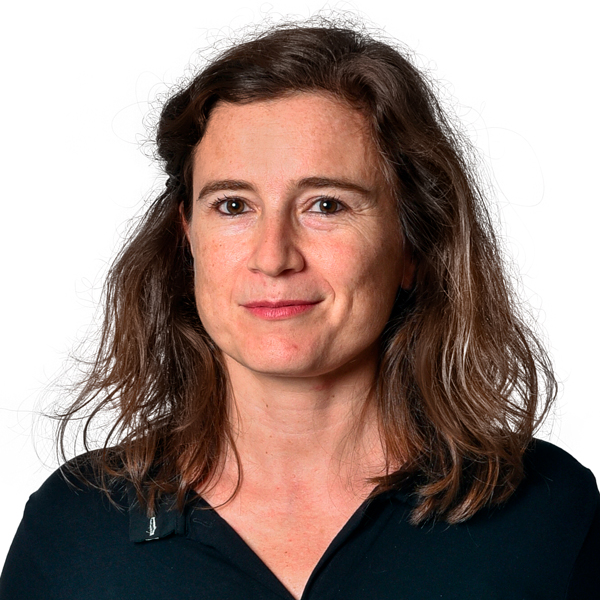Growth and consolidation in academic publishing: the experience of two scientific journals
Subject: Multidisciplinary
The UOC Scientific Publishing Seminar contributes to the ongoing study of academic journals.
The lessons learnt by the editors of two academic journals: RAE-IC and NAER.
Two scientific journals, at two different stages in their development. The guest speakers at the 12th UOC Scientific Publishing Seminar spoke about the two sides of academic publishing. Ángel Vizoso spoke about the beginnings of the emerging journal RAE-IC: Journal of the Spanish Association of Communication Research, of which he is the editor. In turn, Santiago Mengual explained how NAER: Journal of New Approaches in Educational Research, of which he is executive editor, has established its reputation over the last 10 years.
Their presentations enabled the attendees, most of whom were members of the editorial teams of journals published or jointly published by the UOC, to appreciate the lessons learnt by the editors of these two academic journals.
The early days of a scientific journal
Ángel Vizoso shared his experience as editor of RAE-IC and presented the Spanish Association of Communication Research (AE-IC) journal published by the Novos Medios research group at the University of Santiago de Compostela (USC).
The project was launched in 2014 as a twice-yearly publication. As he explained, given its nature, "open access and free publication were essential requirements for the journal". Articles in RAE-IC centre on communication, and one of its main strengths is its diversity: it covers subjects ranging from research into journalism and the press to communication policies and social media. Contributors to RAE-IC are mostly young people at the beginning of their academic careers, although more experienced researchers also submit material.
Recent achievements include the journal's inclusion on the Plataforma de Revistas Científicas de Comunicación (Platform of Scientific Journals on Communication) and, following an approval process, its articles inclusion in the Redalyc database. These represent two opportunities "to continue raising the profile of the articles we publish," said Vizoso.
Recently RAE-IC also obtained the Spanish Foundation for Science and Technology (FECYT) seal of quality and indexation in Latindex and the Directory of Open Access Journals (DOAJ).
Despite these advances, Vizoso also mentioned several challenges currently facing the journal which limit its presence in impact factor indices. One is that most of the writers and members of the editorial board are from Spanish- and Portuguese-speaking countries, and articles are published mainly in Spanish, the presence of English being very limited. This is particularly problematic in the field of communication, where academic publication is very competitive.
With this in mind, the journal's editorial team is making an effort to increase the geographical scope of RAE-IC and work more extensively with international researchers and institutions. It is also working to secure the journal's inclusion in the Emerging Sources Citation Index (ESCI) database, encouraging guest contributors to write in English and examining ways to translate some articles with a view to raising their profile and increasing citation rates.
The RAE-IC team is also undertaking the publication of special issues, featuring current, trending topics in research into communication, so that new subject areas can be explored, beyond the sections covered by the journal's association. The journal will, however, continue to ensure that new researchers have an opportunity to see their work published.
Strategies to consolidate and grow
Santiago Mengual's presentation began with an examination of the current state of Spanish education sciences journals, emphasizing their important contribution to research into topics related to education. In the 2021 SJR index, Spain ranked third for the number of indexed journals in the field of education (70 out of a total of 1,381), a figure only exceeded by those for the United Kingdom and the USA.
The speaker also pointed out that 40% of these journals are produced by universities and 23% by scientific associations, and that many publications are owned by large publishing groups.
Mengual went on to describe the experience of NAER: Journal of New Approaches in Educational Research, a project launched in 2011, thanks to the Interdisciplinary Group for Research into University Teaching – Education and Information and Communication Technologies/Inclusive Education (GIDU-EDUTIC/IN) at the University of Alacant. The journal, which is open access, switched to publishing only in English in 2021 and currently receives a million visits each year. The editorial team focuses on the technology, the international scope and its ranking in international indices.
The executive editor explained that the team devoted a lot of work to indexing and promotion to gain credibility as an education journal in a field that was already well established.
NAER is listed in the Clarivate Analytics and Scopus indices and its position has been improving, although Mengual admitted that "while the initial challenge is to get in, the subsequent challenge is to consolidate your position".
The journal's improved positioning has led to an increase in the number of submissions received, enabling it to choose the contributions that have the most scientific value and present the most interesting new ideas. Key aspects of the journal's ongoing improvements include the efforts of the editorial team to liaise with the work team and streamline reviewing and production; close communication with authors and additional services for authors, such as the creation of infographics and monitoring the metrics of articles.
Mengual ended his presentation by putting forward a number of questions for discussion. He wondered about the role of scientific journals in evaluating science, and their possible contribution as research data repositories in the future. He also referred to the role of journals as a channel for the transfer of knowledge to the public. He also suggested that open peer reviews might be incorporated in education science journals.
The executive editor repeatedly stressed the difficulties faced by journals that are not professionalized because of the pressure of rankings, the dominance of publishing groups and lack of resources: "What is the role of agencies in supporting scientific publishers at universities? [...] we wonder why they aren't closer to scientific publishers who already have established projects and are facing sustainability problems."
Meet the speakers

Vizoso has a PhD in Contemporary Communication and Information and is a member of the Department of Communication Sciences at the University of Santiago de Compostela (USC). His research centres on the study of information visualization, changes in professional profiles and fact-checking in media today.

Mengual has a bachelor's degree and a PhD in Educational Psychology and is currently a senior lecturer and the director of the Comparative Education and History of Education Department of the School of Philosophy and Education, Universitat de València (UV). His research mainly centres on the role of ICT in education.
Experts
Elsa Corominas
Operative subgroup: Academic Journal Editing Operative group: Office of the Deputy General Manager for Research and Knowledge Transfer. Open Science



